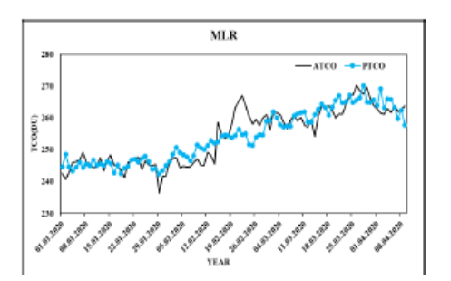


Indian Journal of Science and Technology
Year: 2022, Volume: 15, Issue: 29, Pages: 1420-1428
Original Article
T M Anu1*, K Elampari2
1Research Scholar, Reg. No. 18113152132030, Physics Research Centre, S.T. Hindu College, Nagercoil, Affiliated to Manonmaniam Sundaranar University, Abishekapatti, Tirunelveli, 627012, Tamil Nadu, India
2Associate Professor, Department of Physics, S.T. Hindu College, Nagercoil, Manonmaniam Sundaranar University, Abishekapatti, Tirunelveli, 627 012, Tamil Nadu, India
*Corresponding Author
Email: [email protected]
Received Date:31 March 2022, Accepted Date:17 June 2022, Published Date:27 March 2022
Objectives: Atmospheric Ozone plays an important role in global climate change, human health and environmental conditions. Accurate and timely prediction of variation in Total Column Ozone (TCO) concentration is very important for both climatology and environment. In this context, the present study aims to utilize the advancement of Artificial Intelligence in Machine learning and a conventional method to develop models for the prediction of TCO concentration using historical time series data over a tropical region, India. Methods: Long Short-Term Memory (LSTM) deep learning networks are very useful in classifying, processing and making predictions based on time series data. In this work, Multiple Linear Regression (MLR) model, Long Short-Term Memory (LSTM) models are developed for forecasting TCO over a tropical region. The Statistical Parameters such as Root Mean Square Error (RMSE), Mean Absolute Error (MAE) and Mean Absolute Percentage Error (MAPE) were used to analyze and evaluate the performance of the proposed models. Findings: In the present study the TCO concentration varied between 217.4 DU and 288.6 DU. The performances of MLR and LSTM model were compared. From the results, it is evident that the values of RMSE, MAE and MAPE of the MLR model are 3.807924, 2.93766, 1.15 respectively whereas the values for LSTM model are 3.074492, 2.574, 1.01 respectively. LSTM was found to be the accurate model for the study data set and the predicted TCO concentration has a very good correlation with the actual observations and it does not rely on the meteorological parameters. Novelty: The LSTM models are usually employed in the field of machine translation, speech recognition and for the prediction of traffic levels, stock levels and air pollutants. This work utilizes the fast numerical machine learning computing library Tensorflow and a high level neural network library Keras that runs on top of Tensorflow to develop a LSTM network model for the prediction of the concentration levels of TCO.
Keywords: Total Column Ozone; Regression; Forecasting; Climate Change; Long Short-Term Memory
© 2022 Anu & Elampari. This is an open-access article distributed under the terms of the Creative Commons Attribution License, which permits unrestricted use, distribution, and reproduction in any medium, provided the original author and source are credited.
Published By Indian Society for Education and Environment (iSee)
Subscribe now for latest articles and news.